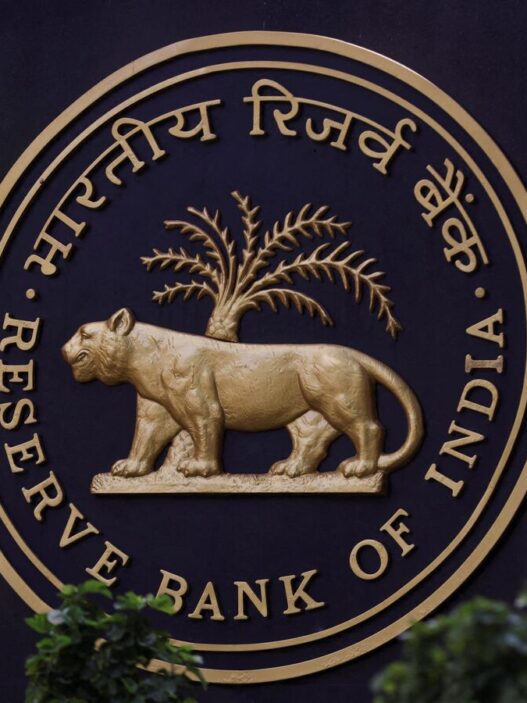Landing an admission in top-tier colleges for the most-sought-after courses in places such as the US and Europe is a dream for students. But getting admission in an institution of one’s choice is only one part of the process. Students have to get the necessary funding to cover their education expenses, which will be quite huge. Banks and NBFCs (Non-banking finance companies) offer loans to fund the education expenses of students.
Here is a complete guide on education loans for overseas studies including the maximum amount one can get, interest rates, costs covered and other important information.
What is the loan amount that the student can get?
The amount a student can avail as an education loan for overseas studies varies with each lender. But loans start from ₹45 lakh and can go up to a maximum of ₹3 crore. You can get the maximum amount if you get admission at premier institutions in the US, Europe, Australia, New Zealand, Hong Kong and Singapore. The list of such institutions, which includes the famed Harvard, Stanford, Cambridge, Oxford and MIT among others, is displayed on banks’ websites.
Securing admission in such institutions will also make you eligible for a collateral-free loan, which ranges from ₹50 lakh to ₹1 crore. Admission in premier educational institutes also means that you do not have to pay a margin money to obtain the loan. But if you get admissions in non-premier institutes, you have to shell out a margin money of 15%. Simply put, if your loan requirement is ₹1 crore, you have to provide ₹15 lakh from your own sources while the bank/NBFC will provide ₹85 lakh as loan.
What are the interest rates and repayment tenure?
Interest rates vary with each lender. Banks charge an effective interest rate of 8.64% per year and this can go up to 14.25%. Several lenders have tied the interest rates on these loans to repo rates (the rate at which RBI lends money to banks). Banks charge interest that is in excess of the repo rate by about 3.75%. Since RBI has fixed the repo rate at 6.5% now, interest rates on overseas education loans will work out to around 9.25% with lenders who have repo as the benchmark for advances.
Banks also disburse these loans based on their own benchmark lending rates, which can be slightly higher than repo-based rates. The processing fee is usually around 1% of the loan amount and is capped at ₹10,000 (plus applicable GST).
The repayment tenure for loans is typically between 12 years and 14 years though some banks have fixed it at 10 years for students availing loans for undergraduate courses. Banks extend a moratorium period for the loans—repayments will start only after the student completes the course. The moratorium usually lasts for up to six months after the completion of the course but some lenders offer the benefit for up to a year.
What are the costs that are covered?
Banks provide a complete list of expenses that will be covered by the loan. They include:
- Fee payable to college/hostel.
- Examination/Library/Laboratory fee.
- Travel expenses/passage money for studies abroad.
- Purchase of books/equipment/instruments/uniforms/ computer at reasonable cost, if required for course completion and any other expense required to complete the course– like study tours, project work, thesis, etc. But they are capped at 20% of the total tuition fee payable for completion of the course.
- Caution deposit /building fund/refundable deposit supported by institution bills/receipts. The amount should not exceed 10% of the tuition fee for the entire course.
- Premium of life insurance/ credit life policy to improve insurance coverage of the loan.
- The cost of external coaching /tuition is not considered.
- Some banks remit the loan amount directly to the institution/hostel—term wise/year wise in stages as per the requirement/demand. They also pay directly to the book seller/shop for purchase of books, instruments and equipment.
- If the student is not able to get the hostel facility, she/he is allowed to make their own arrangements. Lodging/boarding charges in such cases would be paid directly to the establishment concerned after verifying bona fides of the same.
Should the student offer collateral for getting the loan?
It depends on the loan amount. If the student gets a lower amount as an education loan, it is treated as an unsecured loan and no collateral is needed for the same. But if the loan amount is higher than the limits allowed by the bank, she/he has to provide collateral, which can be bank fixed deposits, flat, house, bungalow, land (non-agricultural), shop etc. Banks may also require a co-guarantor, which can be the parent of the student in cases where a higher loan amount is available.
If the collateral is immovable property, the borrower should submit these documents:
- Property Title Deed
- Registered ‘Sale Agreement’ along with ‘Society Share Certificate’ (for housing societies)
- Original registration receipt for the above agreement
- Allotment letter by municipal corporation /authorised government authority like MHADA, CIDCO, etc if flat is given by government-owned entities
- Previous chain of ‘Sale Deed’ establishing title
- Latest maintenance bill along with receipts issued by builder/society
- Latest property tax bill along with receipts
- NOC (No objection certificate) for mortgage from society/builder
- Approved building plan
- Encumbrance certificates as on date
Which documents should be submitted for availing the loan?
Students have to submit a whole set of documents along with the duly-filled loan application form. They include regular ones for identity and address proof (Aadhaar/PAN card/Driving Licence/Voter ID and Passport) and academic certificates that include:
- Marksheet of class 10, class 12, entrance exam result
- Marksheet/Certificate of subsequent years of education e.g. BE, BCom, BSc, etc.
- GRE/GMAT/TOEFL/IELTS marksheets (if applicable)
- Scholarship documents (if applicable)
- Proof of admission to course (Offer Letter/ Admission Letter/ ID card, if available)
- Schedule of expenses for course
- Copies of letter conferring scholarship etc.
- Gap certificate, if applicable (self-declaration from student for gap in studies)
- Passport size photographs of Student /Parent/Co-borrower/Guarantor (1 copy each)
- Asset-Liability Statement of Co-applicant /Guarantor
The student also has to provide the latest bank statements (six months prior to the application month) of the co-applicant if she/he is availing a loan based on collateral provided by the co-applicant. The student has to include the bank statements of the account where salary or business/professional receipts are credited every month.
Allirajan M is a journalist with over two decades of experience. He has worked with several leading media organisations in the country and has been writing on mutual funds for nearly 16 years.
Catch all the Instant Personal Loan, Business Loan, Business News, Money news, Breaking News Events and Latest News Updates on Live Mint. Download The Mint News App to get Daily Market Updates.
MoreLess












